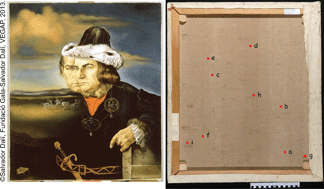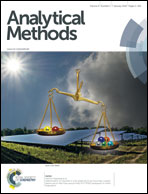Looking beneath Dalí's paint: non-destructive canvas analysis
Abstract
A new analytical method was developed to non-destructively determine pH and degree of polymerisation (DP) of cellulose in fibres in 19th–20th century painting canvases, and to identify the fibre type: cotton, linen, hemp, ramie or jute. The method is based on NIR spectroscopy and multivariate data analysis, while for calibration and validation a reference collection of 199 historical canvas samples was used. The reference collection was analysed destructively using microscopy and chemical analytical methods. Partial least squares regression was used to build quantitative methods to determine pH and DP, and linear discriminant analysis was used to determine the fibre type. To interpret the obtained chemical information, an expert assessment panel developed a categorisation system to discriminate between canvases that may not be fit to withstand excessive mechanical stress, e.g. transportation. The limiting DP for this category was found to be 600. With the new method and categorisation system, canvases of 12 Dalí paintings from the Fundació Gala-Salvador Dalí (Figueres, Spain) were non-destructively analysed for pH, DP and fibre type, and their fitness determined, which informs conservation recommendations. The study demonstrates that collection-wide canvas condition surveys can be performed efficiently and non-destructively, which could significantly improve collection management.

- This article is part of the themed collection: Molecular Analysis for Art, Archaeometry and Conservation

 Please wait while we load your content...
Please wait while we load your content...